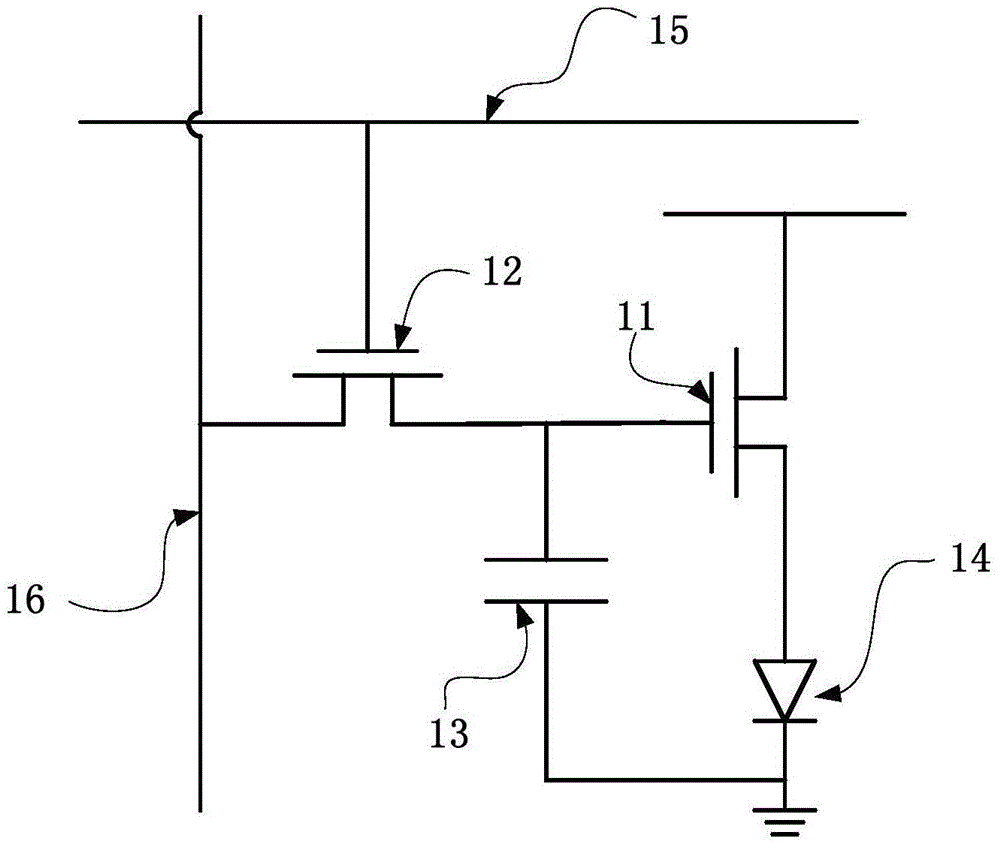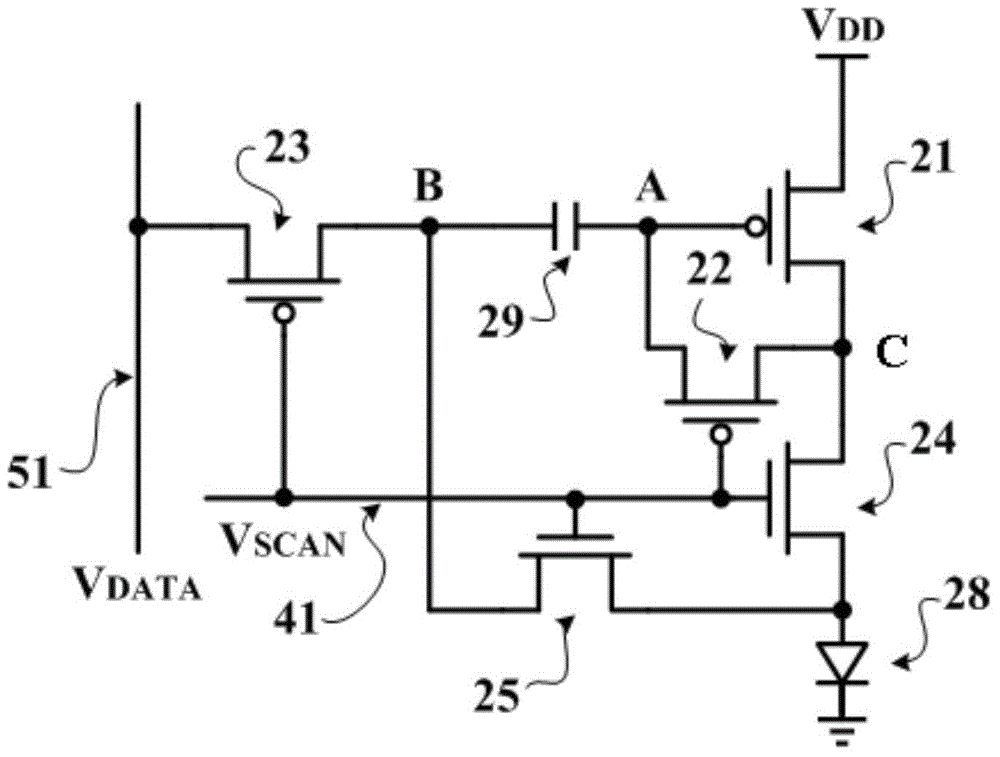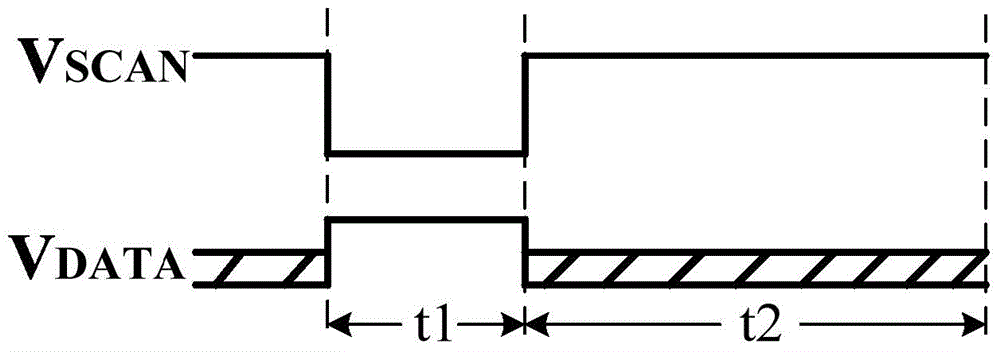Display device, pixel circuit thereof and driving method thereof
A pixel circuit and current technology, which is applied in the field of display devices, can solve problems such as uneven light emission of pixels and low aperture ratio of pixel circuits, and achieve the effects of reducing voltage distortion, increasing uniformity, and uniform brightness
- Summary
- Abstract
- Description
- Claims
- Application Information
AI Technical Summary
Problems solved by technology
Method used
Image
Examples
Embodiment 1
[0050] like figure 2 Shown is a structural diagram of the pixel circuit of the first embodiment, including a first transistor 21, a second transistor 22, a third transistor 23, a fourth transistor 24, a fifth transistor 25, a light-emitting device 28, a capacitor 29, and a first scan control. Signal line 41 and data signal line 51 .
[0051] The first transistor 21, the second transistor 22 and the third transistor 23 are P-type transistors; the fourth transistor 24 and the fifth transistor 25 are N-type transistors; the first transistor 21, the fourth transistor 24 and the light-emitting device 28 are connected in series with the power supply voltage line and ground level.
[0052] The control electrode of the first transistor 21 is coupled to the first current conducting electrode of the capacitor 29 , the first current conducting electrode of the first transistor 21 is coupled to the second current conducting electrode of the second transistor 22 , and the first current c...
Embodiment 2
[0073] like Figure 5 Shown is the structure diagram of the pixel circuit according to the second embodiment of the present invention, including a first transistor 21, a second transistor 22, a third transistor 23, a fourth transistor 24, a fifth transistor 25, a light-emitting device 28, a capacitor 29, a first transistor The scan control signal line 41 , the second scan control signal line 42 and the data signal line 51 . The main difference between the device selection and the first embodiment is that the fourth transistor 24 and the fifth transistor 25 are P-type transistors. The circuit adopts the circuit structure of all P-type tubes, which can reduce the process complexity in the manufacturing process. The devices whose connection relationship has not changed in the circuit will not be repeated here. The difference in the circuit connection is that the control electrode of the fourth transistor 24 is coupled to the second scan control signal line 42, and the first curr...
Embodiment 3
[0088] like Figure 8 As shown, the pixel circuit in this embodiment includes a first transistor 21, a second transistor 22, a third transistor 23, a fourth transistor 24, a fifth transistor 25, a light-emitting device 28, a capacitor 29, and a first scan control signal line 41 and data signal line 51 .
[0089]The first transistor 21, the fourth transistor 24 and the fifth transistor 25 are P-type transistors, the second transistor 22 and the third transistor 23 are N-type transistors; the first transistor 21, the fourth transistor 24 and the light-emitting device 28 are connected in series to the first between the supply voltage line and the ground level.
[0090] The control electrode of the first transistor 21 is coupled to the first current conducting electrode of the capacitor 29 , the first current conducting electrode of the first transistor 21 is coupled to the first current conducting electrode of the second transistor 22 , and the first current conducting electrode...
PUM
 Login to View More
Login to View More Abstract
Description
Claims
Application Information
 Login to View More
Login to View More - Generate Ideas
- Intellectual Property
- Life Sciences
- Materials
- Tech Scout
- Unparalleled Data Quality
- Higher Quality Content
- 60% Fewer Hallucinations
Browse by: Latest US Patents, China's latest patents, Technical Efficacy Thesaurus, Application Domain, Technology Topic, Popular Technical Reports.
© 2025 PatSnap. All rights reserved.Legal|Privacy policy|Modern Slavery Act Transparency Statement|Sitemap|About US| Contact US: help@patsnap.com



